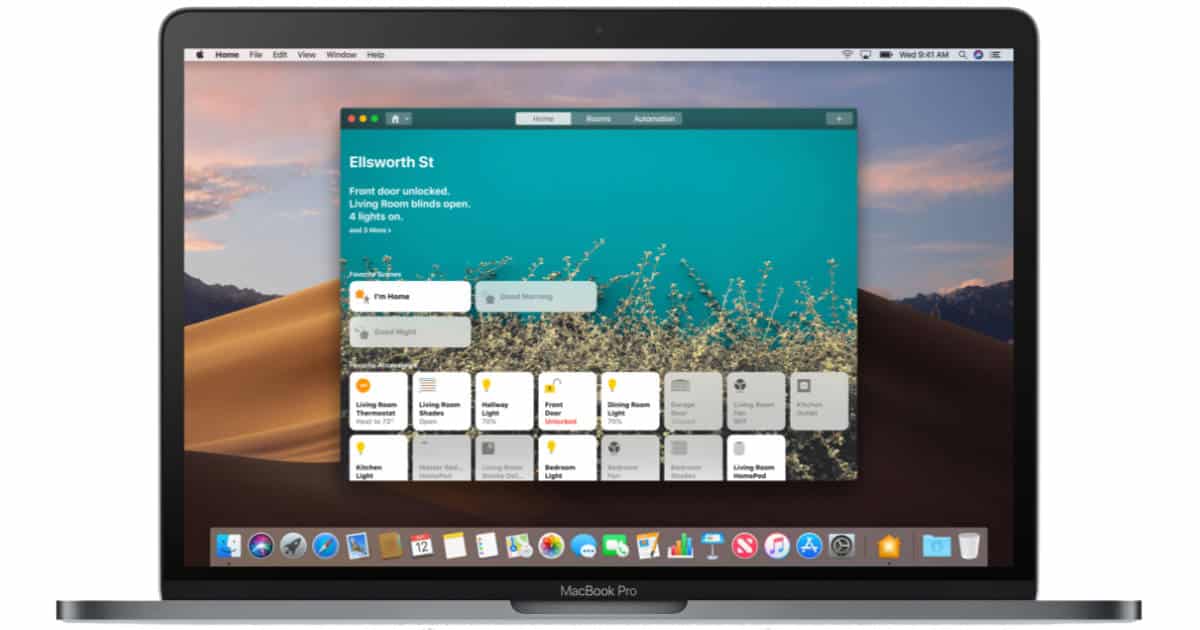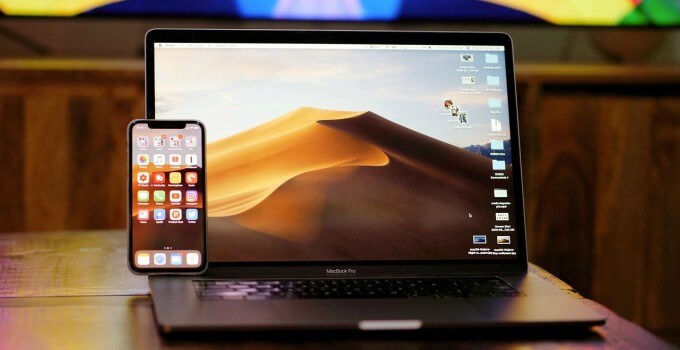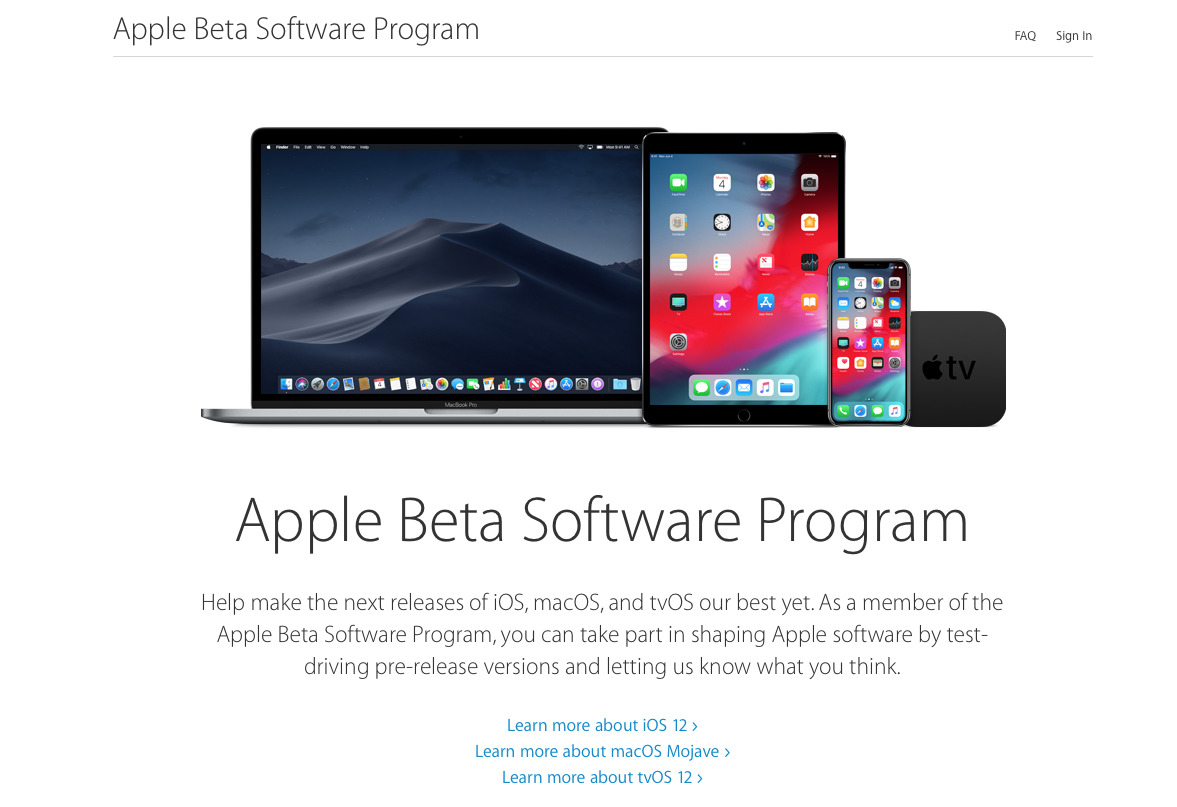Today I will tell you how to install macOS Mojave or other fresh macOS on an unsupported Mac using the Mojave Patcher Tool. This utility is available for free. You can see more information and patcher updates here on a dosdude site.
I just figured out how to resolve this through few easy steps: Step 1. Go to your applications folder. Find the installer for macOS Mojave. Right click on the installer and click 'Show Package Contents'. Click on folder named 'Contents'. Aug 03, 2021 Install Macos Mojave On Unsupported Mac Macos 10.14 Mojave On Unsupported Macs Thread May 07, 2020 How to Install macOS Catalina on Unsupported Mac; With these much problems that are for Mac users, Windows users might not even think of getting Mac or MacOS somehow. Mojave Patcher allows you to create a custom Mojave installer disk for installing Mojave on a unsupported Mac. It is available here. There is also a list of Macs that it works with, so check that out first. It includes a list of known bugs, which is not necessarily complete (see below regarding my own experience). How to install macOS Big Sur on unsupported Mac models? Step 1: Create a Backup. Step 2: Download Big Sur Patcher File. Step 3: Open the macOS Big Sur Patcher file. Step 4: Insert USB Drive. Step 5: Install macOS Bir Sur on Unsupported Mac. Install macOS Big Sur on unsupported Mac: Some common errors and their fix. Macos Mojave On Unsupported Mac This advisory describes the changes and steps administrators can take to deploy Mac Connector 1.14. The Mojave 10.14.1 update does NOT install properly on unsupported machines, and could result in an unbootable OS.
Attention! Do not forget! You carry out all actions with the computer and the program at your own peril and risk! No one is responsible for damage to your computer or loss of data except you! If you have crooked hands, do not grab it!
Read more: How to Install Boot Camp and Install Windows 10 on Mac?
Devices Supported
Early-2008 or newer Mac Pro, iMac, or MacBook Pro:
- MacPro3,1
- MacPro 4.1
- iMac8.1
- iMac9.1
- iMac10, x
- iMac11, x (systems with AMD Radeon HD 5xxx and 6xxx series GPUs will be almost unusable when running Mojave. More details are located in the Known Issues section below.)
- iMac12, x (systems with AMD Radeon HD 5xxx and 6xxx series GPUs will be almost unusable when running Mojave. More details are located in the Known Issues section below.)
- MacBookPro 4.1
- MacBookPro5, x
- MacBookPro6, x
- MacBookPro 7.1
- MacBookPro8, x
Late-2008 or newer MacBook Air or Aluminum Unibody MacBook:
- MacBookAir2.1
- MacBookAir3, x
- MacBookAir4, x
- MacBook 5.1
Early-2009 or newer Mac Mini or white MacBook:
- Macmini 3.1
- Macmini 4.1
- Macmini5, x
- MacBook 5.2
- MacBook 6.1
- MacBook 7.1
Early-2008 or newer Xserve:
- Xserve2.1
- Xserve3.1
Devices that ARE NOT Supported
2006-2007 Mac Pros, iMacs, MacBook Pros, and Mac Minis:
- MacPro1,1
- MacPro2,1
- iMac4.1
- iMac5, x
- iMac 6.1
- iMac7.1
- MacBookPro1,1
- MacBookPro2, x
- MacBookPro3.1
- Macmini1,1
- Macmini 2.1
- The 2007 iMac 7.1 is compatible if the CPU is upgraded to a Penryn-based Core 2 Duo, such as a T9300
2006-2008 MacBooks:
- MacBook1.1
- MacBook 2.1
- MacBook 3.1
- MacBook 4.1
- 2008 MacBook Air (MacBookAir 1.1)
What Do you Need?
A copy of the macOS Mojave Installer App. This can be obtained from the Mac App Store using a machine that supports Mojave, or by using the built-in downloading feature of the tool. In the Menu Bar, simply select “Tools -> Download macOS Mojave …“
Read more: How to Resize Partition on a Mac?
How to Install macOS Mojave with Mojave Patcher Tool?
- Insert a suitable USB flash drive, open Disk Utility and format it in OS X Extended(journal);
- Open “macOS Mojave Patcher” and specify the path to your macOS Mojave installer;

- Select your flash drive in the list of devices and click “Start”;
- After the operation is complete, restart your Mac with the Option (Alt) button pressed, select your USB flash drive in the boot menu;
- Install macOS on the selected drive partition;
- When the installation process is complete, reboot the device by selecting the installer disk to boot. After that, open the macOS Post Install application;
- In the application window, select your Mac model. You will be offered the best patches based on the selected model. You can also mark other patches as desired;
- Select the partition on which macOS Mojave was installed, and click Patch. When the process is complete, click “Reboot”;
- Rebuilding the cache before rebooting the system may take some time! Note: If for some reason the system does not work correctly after rebooting, restart your Mac with the Option (Alt) button pressed, select the installer disk in the boot menu, then run the Post Install patch again and select the “Force Cache Rebuild” option. Then reboot the device;
- When the Mac reboots, it will launch a fully working version of macOS Mojave.
Conclusion

When you install the system using the macOS Post Install tool, a program called Patch Updater (Applications/Utilities folder) will appear on your Mac. This app will inform you about patch updates available for your device and offer to install them.
This advisory describes the changes and steps administrators can take to deploy Mac Connector 1.14.
May 07, 2020 How to Install macOS Catalina on Unsupported Mac; With these much problems that are for Mac users, Windows users might not even think of getting Mac or MacOS somehow. But that’s not true. With all those problems, there’s still some workaround in the underground to make it work. That is install macOS Mojave on Windows.
- How to keep older Macs secure: a geeky approach (run Catalina on unsupported Macs) Posted on October 8th, 2019 by Jay Vrijenhoek. Note: This article was originally written for macOS Mojave, and has been adapted for macOS Catalina. From a security standpoint, using the latest version of macOS—the Mac operating system—is always preferred.
- Allow the installation to proceed and the relevant patches will be applied to your unsupported Mac automatically. Apple could always release a future update to macOS 10.15 that prevents the.
Mac Connector version 1.14 introduces a number of changes that require user attention. Most notably, this Connector release includes changes to full disk access approvals and adds support for macOS 11 (Big Sur) System Extensions.
Since the inital 1.14 launch, compatibility issues have been discovered with 3rd party applications on macOS 10.15 Catalina when system extensions are in use. Apple will be addressing these issues in future releases of macOS 11 but will not be fixing these issues in macOS 10.15. Consequently, starting with version 1.14.1, the Mac Connector will use legacy kernel extensions instead of system extensions on all versions of macOS 10.15.
Mac Connector 1.14 is required to ensure endpoint protection on macOS 11. Older Mac Connectors will not work on this version of macOS.
It is highly recommended to deploy the Mac Connector with an MDM profile that grants the required approvals. MDM profiles must be installed before installing or upgrading the Mac Connector to ensure the needed permissions are recognized. Refer to the Known Issues section later in this document if MDM cannot be used.
Minimum OS Requirements
AMP for Endpoints Mac Connector 1.14.0 supports the following macOS versions:

- macOS 11, using macOS system extensions.
- macOS 10.15.5 and later, using macOS system extensions.
- macOS 10.15.0 through macOS 10.15.4, using macOS kernel extensions
- macOS 10.14, using macOS kernel extensions.
AMP for Endpoints Mac Connector 1.14.1 supports the following macOS versions:
- macOS 11, using macOS system extensions.
- macOS 10.15 using macOS kernel extensions.
- macOS 10.14, using macOS kernel extensions.
For deployments that include endpoints running older macOS versions, consult the OS Compatibility Table for compatible Mac Connector versions.
Important Changes
Mac Connector 1.14 introduces important changes in three areas:
- Approving AMP macOS Extensions to load
- Full Disk Access
- New Directory Structure
Approving Mac Connector macOS Extensions
The Mac Connector uses either System Extensions or legacy Kernel Extensions to monitor system activities, depending on the macOS version. On macOS 11, System Extensions replace the legacy Kernel Extensions that are unsupported in macOS 11. User approval is required on all versions of macOS before either type of extension is allowed to run. Without approval, certain Connector functions such as on-access file scan and network access monitoring will be unavailable.
Mac Connector 1.14 introduces two new macOS system extensions:
- An Endpoint Security extension, named AMP Security Extension, to monitor system events
- A Network Content Filter extension, named AMP Network Extension, to monitor network access
The two legacy Kernel Extensions, ampfileop.kext and ampnetworkflow.kext, are included for backwards compatibility on older macOS versions that don't support the new macOS System Extensions.
The following approvals are required for macOS 11** and later:
- Approve AMP Security Extension to load
- Approve AMP Network Extension to load
- Allow AMP Network Extension to filter network content
** Mac Connector version 1.14.0 also required these approvals on macOS 10.15. These approvals are no longer required on macOS 10.15 when running Mac Connector 1.14.1 or later.
The following approvals are required for macOS 10.14 and macOS 10.15:
Install Macos Mojave On Unsupported Mac
- Approve AMP Kernel Extensions to load
These approvals can be granted using the macOS Security & Privacy Preferences on the endpoint, or by using Mobile Device Management (MDM) profiles.
Approving Mac Connector macOS Extensions at the Endpoint

System and Kernel extensions can be approved manually from the macOS Security & Privacy Preferences pane.
Approving Mac Connector macOS Extensions using MDM
NOTE: macOS Extensions cannot be retroactively approved via MDM. If the MDM profile is not deployed prior to installing the Connector then the approvals will not be granted and additional intervention will be required in one of the following forms:
1. Manual approval of the macOS Extensions on endpoints that had the management profile deployed retroactively.
2. Upgrading the Mac Connector to a newer version than the one currently deployed. Endpoints that had themanagement profile deployed retroactively will recognize the management profile after upgrade and gain approval once the upgrade completes.
AMP extensions can be approved using a management profile with the following payloads and properties:
| Payload | Property | Value |
| SystemExtensions | AllowedSystemExtensions | com.cisco.endpoint.svc.securityextension, com.cisco.endpoint.svc.networkextension |
| AllowedSystemExtensionTypes | EndpointSecurityExtension, NetworkExtension | |
| AllowedTeamIdentifiers | DE8Y96K9QP | |
| SystemPolicyKernelExtensions | AllowedKernelExtensions | com.cisco.amp.fileop, com.cisco.amp.nke |
| AllowedTeamIdentifiers | TDNYQP7VRK | |
| WebContentFilter | AutoFilterEnabled | false |
| FilterDataProviderBundleIdentifier | com.cisco.endpoint.svc.networkextension | |
| FilterDataProviderDesignatedRequirement | anchor apple generic and identifier 'com.cisco.endpoint.svc.networkextension' and (certificate leaf[field.1.2.840.113635.100.6.1.9] /* exists */ or certificate 1[field.1.2.840.113635.100.6.2.6] /* exists */ and certificate leaf[field.1.2.840.113635.100.6.1.13] /* exists */ and certificate leaf[subject.OU] = DE8Y96K9QP) | |
| FilterGrade | firewall | |
| FilterBrowsers | false | |
| FilterPackets | false | |
| FilterSockets | true | |
| PluginBundleID | com.cisco.endpoint.svc | |
| UserDefinedName | AMP Network Extension |
Full Disk Access
MacOS 10.14 and later require approval before an application can access parts of the filesystem that contain personal user data (e.g. Contacts, Photos, Calendar, and other applications). Certain Connector functions such as on-access file scan will be unable to scan these files for threats without approval.
Previous Mac Connector versions required the user to grant Full Disk Access to the ampdaemon program. Mac Connector 1.14 requires Full Disk Access for:
- 'AMP for Endpoints Service' and
- 'AMP Security Extension'
The ampdaemon program no longer requires Full Disk Access starting with this new Mac Connector version.
Mac Os Mojave Beta
Full Disk Access approvals can be granted using the macOS Security & Privacy Preferences on the endpoint, or by using Mobile Device Management (MDM) profiles.
Approving Full Disk Access at the Endpoint
Full Disk Access can be approved manually from the macOS Security & Privacy Preferences pane.
Approving Full Disk Access Using MDM
NOTE: macOS Extensions cannot be retroactively approved via MDM. If the MDM profile is not deployed prior to installing the Connector then the approvals will not be granted and additional intervention will be required in one of the following forms:
1. Manual approval of the macOS Extensions on endpoints that had the management profile deployed retroactively.
2. Upgrading the Mac Connector to a newer version than the one currently deployed. Endpoints that had the management profile deployed retroactively will recognize the management profile after upgrade and gain approval once the upgrade completes.
Full Disk Access can be approved using a management profile's Privacy Preferences Policy Control payload with a SystemPolicyAllFiles property with the following two entries, one for the AMP for Endpoints Service and one for the AMP Security Extension:
| Description | Property | Value |
| AMP for Endpoints Service | Allowed | true |
| CodeRequirement | anchor apple generic and identifier 'com.cisco.endpoint.svc' and (certificate leaf[field.1.2.840.113635.100.6.1.9] /* exists */ or certificate 1[field.1.2.840.113635.100.6.2.6] /* exists */ and certificate leaf[field.1.2.840.113635.100.6.1.13] /* exists */ and certificate leaf[subject.OU] = DE8Y96K9QP) | |
| Identifier | com.cisco.endpoint.svc | |
| IdentifierType | bundleID | |
| AMP Security Extension | Allowed | true |
| CodeRequirement | anchor apple generic and identifier 'com.cisco.endpoint.svc.securityextension' and (certificate leaf[field.1.2.840.113635.100.6.1.9] /* exists */ or certificate 1[field.1.2.840.113635.100.6.2.6] /* exists */ and certificate leaf[field.1.2.840.113635.100.6.1.13] /* exists */ and certificate leaf[subject.OU] = DE8Y96K9QP) | |
| Identifier | com.cisco.endpoint.svc.securityextension | |
| IdentifierType | bundleID |
If your deployment includes computers running AMP Connector version 1.12.7 or older, the following additional entry is still required to grant full disk access to ampdaemon for those computers:

| Description | Property | Value |
| ampdaemon | Allowed | true |
| CodeRequirement | identifier ampdaemon and anchor apple generic and certificate 1[field.1.2.840.113635.100.6.2.6] /* exists */ and certificate leaf[field.1.2.840.113635.100.6.1.13] /* exists */ and certificate leaf[subject.OU] = TDNYQP7VRK | |
| Identifier | /opt/cisco/amp/ampdaemon | |
| IdentifierType | path |
New Directory Structure
Mac Connector 1.14 introduces two changes to the directory structure: Avatar the game pc digital download.
- The Applications directory has been renamed from
Cisco AMPtoCisco AMP for Endpoints. - The command-line utility
ampclihas been moved from/opt/cisco/ampto/Applications/Cisco AMP for Endpoints/AMP for Endpoints Connector.app/Contents/MacOS. The directory/opt/cisco/ampcontains a symlink to theampcliprogram at its new location.
The complete directory structure for the new AMP Connector is as follows:
Known Issues with macOS 11.0 and Mac Connector 1.14.1.
- Guidance for fault 10, 'Reboot required to load kernel module or system extension,' may be incorrect if four or more Network Content Filters are installed on the computer. Refer to the AMP For Endpoints Mac Connector Faults article for more details.
Known Issues with macOS 10.15/11.0 and Mac Connector 1.14.0.
- Some faults raised by the Mac Connector may be raised unexpectedly. Refer to the AMP For Endpoints Mac Connector Faults article for more details.
- Fault 13, Too many Network Content Filter system extensions, may be raised after upgrading. Rebooting the computer will resolve the fault in this situation.
- Fault 15, System Extension requires Full Disk Access, may be raised after reboot due to a bug in macOS 11.0.0. This issue is fixed in macOS 11.0.1. The fault can be resolved by re-granting full disk access in the Security & Privacy pane in macOS System Preferences.
- During installation, the Security & Privacy pane may display 'Placeholder Developer' as the application name when granting permission for the Mac Connector system extensions to run. This is due to a bug in macOS 10.15. Check the boxes beside 'Placeholder Developer' to allow the Mac Connector to protect the computer.
- The
systemextensionsctl listcommand can be used to determine which system extensions are awaiting approval. System extensions with the state[activated waiting for user]in this output are displayed as 'Placeholder Developer' in the macOS preferences page shown above. If more than two 'Placeholder Developer' entries are showin in the above preferences page, uninstall all software that uses system extensions (including the Mac Connector) so that no system extensions are awaiting approval, and then reinstall the Mac Connector.
The Mac Connector sysem extensions are identified as follows:- The Network Extension is shown as
com.cisco.endpoint.svc.networkextension. - The Endpoint Security extension is shown has
com.cisco.endpoint.svc.securityextension.
- The Network Extension is shown as
- The
- During install, the prompt to allow the Mac Connector's Content Filter to monitor network traffic may display '(null)' as the application name. This is caused by a bug in macOS 10.15. The user needs to select 'Allow' to to ensure protection of the computer.
If the prompt was dismissed by clicking 'Don't Allow' it can be displayed again by clicking the AMP Agent menulet icon in the menu bar and selecting 'Allow Network Filter.'
Once enabled, the AMP Network Extension filter will be listed in the Network Preferences page. - On macOS 11, when upgrading from Mac Connector 1.12 to Mac Connector 1.14, Fault 4, System Extension Failed to Load, may be raised temporarily while the Connector is transitioning from the kernel extensions to the new system extensions.
Revision History
Dec 1, 2020
- Mac Connector 1.14.1 no longer uses system extensions on macOS 10.15.
- Additional guidance on using terminal check which 'Placeholder Developer' System Extensions are awaiting approval when using Mac Connector 1.14.0.
Nov 9, 2020
- Corrected bundle ID in full disk access CodeRequirement MDM payload.
Nov 3, 2020
- Release date for 1.14.0 Mac Connector is November 2020.
- The 1.14.0 Mac Connector will use System Extensions starting with macOS 10.15.5. Previously this was 10.15.6.
- Added Known Issues section.
- Updated directory structure outline.
How To Install Mojave On Unsupported Macs
Carbon Copy Cloner requires macOS. CCC will not run on Windows.
Carbon Copy Cloner 5 is the latest version available. Users running Yosemite (10.10), El Capitan (10.11), Sierra (10.12), High Sierra (10.13), Mojave (10.14), or Catalina (10.15) should use this version of CCC. If you are having trouble downloading CCC from the link above, try this alternate download location.
Upgrading from CCC 4? CCC 5 is a paid upgrade. CCC 4 Personal and Household licenses purchased prior to May 22, 2017 are eligible for upgrade pricing. When you open CCC 5, it will automatically retrieve your new license or an upgrade coupon that you can use to purchase CCC 5 at 50% off. CCC 4 licenses purchased on or after May 22, 2017 are eligible for a free CCC 5 upgrade license.
CCC 5: Support for macOS 11 Big Sur
CCC 5.1.22 (and later) is qualified for macOS 11 Big Sur. Open CCC and choose 'Check for updates.' from the Carbon Copy Cloner to get the update, or click the 'Download CCC 5' button above. Please take a moment to review the following resources prior to upgrading to macOS Big Sur:
Macos Mojave On Unsupported Mac
Carbon Copy Cloner 4.1.24 is compatible with Mountain Lion (10.8), Mavericks (10.9), Yosemite (10.10), El Capitan(10.11), Sierra (10.12) and High Sierra (10.13). Note that while this version of CCC may work on El Capitan and newer OSes, we recommend that El Capitan+ users upgrade to CCC 5. We offer technical support for CCC 4, but we are no longer actively developing it. If you are having trouble downloading CCC from the link above, try this alternate download location.
Mac Os On Unsupported Mac
Install Macos Mojave On Unsupported Mac
CCC 4 and Mojave+: CCC 4 is qualified up to macOS High Sierra. CCC 4 license holders are welcome to continue using CCC 4 on later OSes with the understanding that this is an untested and unsupported configuration. CCC 5 is fully qualified on macOS Mojave and offers extensive support for APFS, including support for point-in-time restores via APFS filesystem snapshots.
Install Macos Mojave On Unsupported Macs
Unsupported Versions
Macos 10.14 Mojave On Unsupported Macs Thread
Download CCC 3.5.7 for use on Snow Leopard (10.6) and Lion (10.7). Download CCC 3.4.7 for use on Tiger (10.4) and Leopard (10.5). CCC 3.4.7 and 3.5.7 are provided as-is; we regret that we cannot offer any support for the installation or use of these older versions of CCC.
If you’re using macOS Mojave or later, choose Apple menu System Preferences, then click Software Update. If you’re using an earlier macOS, use the App Store instead. Learn how to download and install macOS Big Sur Go to the App Store. Upgrade os x mojave. Feb 05, 2021 macOS Mojave 10.14 can upgrade High Sierra, Sierra, El Capitan, Yosemite, Mavericks, Mountain Lion macOS High Sierra 10.13 can upgrade Sierra, El Capitan, Yosemite, Mavericks, Mountain Lion Safari downloads the following older installers as a disk image named InstallOS.dmg or InstallMacOSX.dmg.